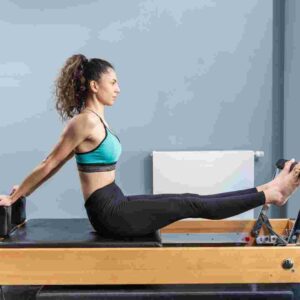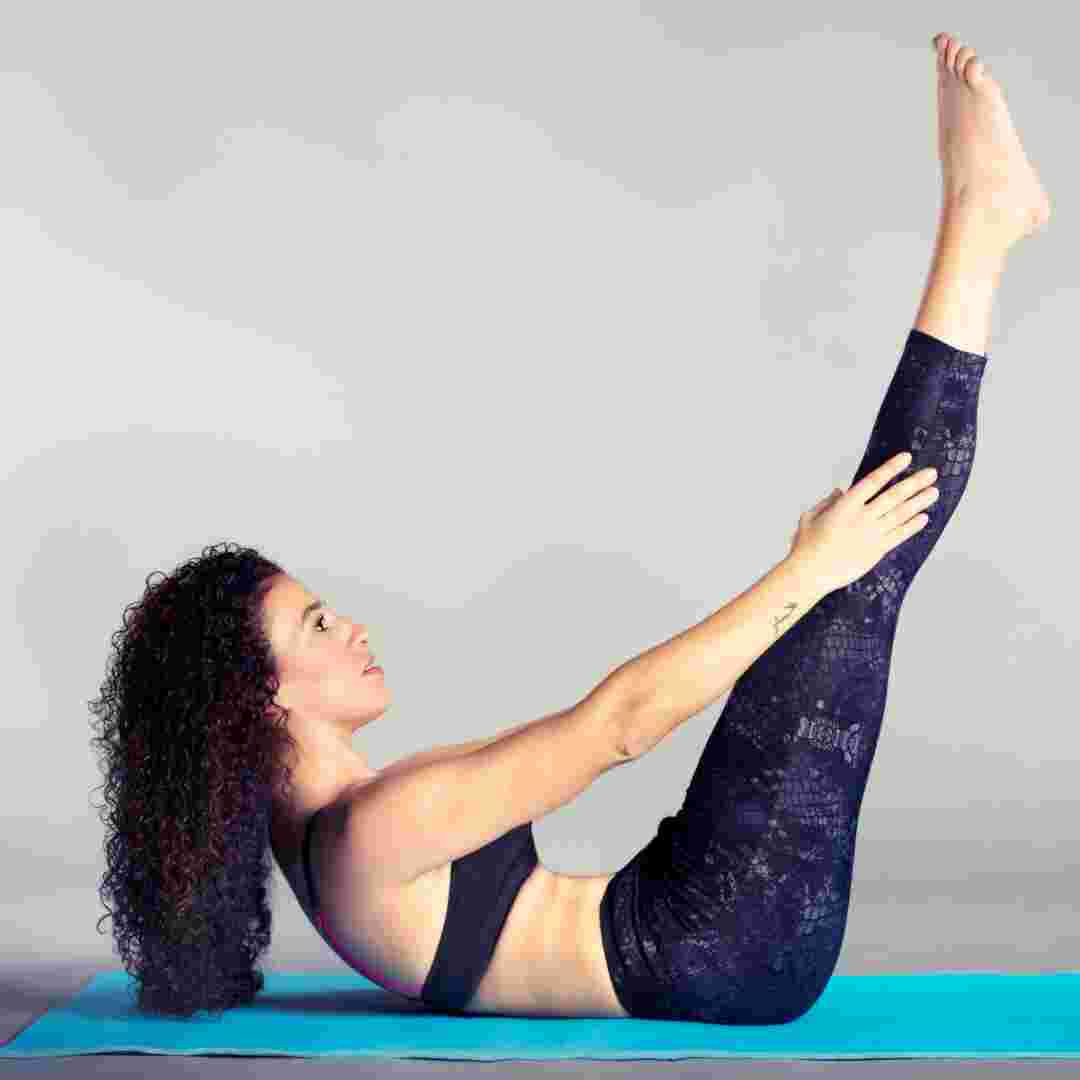Table of Contents
Introduction
Pilates Tower Benefits for Full-Body Workout
Add Pilates Tower to Your Fitness Routine
Differences between Pilates Tower and Other Equipment
Q&A
Conclusion
Experience full-body strength and flexibility with Pilates Tower."
Introduction
A Pilates tower is utilised in exercises. Its vertical structure with springs and bars permits standing or laying activities. The tower helps Pilates practises increase strength, flexibility, and posture by providing resistance and support. It is a popular Pilates and gym tool worldwide.
Pilates Tower Benefits for Full-Body Workout
Pilates has been around for almost a century. Joseph Pilates, who felt mental and physical health were linked, created it. Low-impact Pilates builds strength, flexibility, and endurance. It boosts fitness and well-being.
Popular Pilates equipment includes the tower. The Pilates tower is adaptable and can be used for many activities. It is like a Pilates reformer but smaller and may be used in smaller places.
The Pilates tower is a vertical frame with springs and bars. Spring resistance builds strength and tones muscles. The bars are good for stretching and flexibility. Straps and handles allow the tower to be utilised for various workouts.
Full-body workouts are one among the key benefits of Pilates towers. The tower targets the arms, legs, back, and core. This makes it ideal for fitness and strength enthusiasts.
Low-impact Pilates towers are another benefit. This makes it less strenuous than running or jumping and less prone to injure joints. This makes it ideal for injured or joint-problem patients.
A Pilates tower can also enhance posture. The tower strengthens spine-supporting muscles in many activities. This can improve posture and alleviate back discomfort.
In addition to physical benefits, Pilates towers can relieve stress and promote mental health. Pilates demands mindfulness of breath and movement. This can alleviate tension and boost happiness.
Starting Pilates with a tower is a fantastic idea. The tower is used in many Pilates courses, and there are several online resources to assist you learn.
Begin Pilates tower workouts slowly and gradually build intensity. Form and technique are also crucial to avoiding damage. A trained Pilates instructor can assist you learn the movements and ensure perfect form if you are new to Pilates.
In conclusion, the Pilates tower is a versatile, full-body workout tool. It reduces tension, improves posture, and is low-impact. Starting Pilates with a tower is a fantastic idea. Beginners to Pilates should start cautiously, use perfect form, and work with a trained teacher.
Add Pilates Tower to Your Fitness Routine
Pilates Tower is a flexible tool for improving Pilates. The vertical frame has springs and bars that may be adjusted for height and resistance. The tower stimulates particular muscle areas and develops strength, flexibility, and balance with a full-body workout.
If you're new to Pilates Tower, take a few lessons with a trained instructor to master the right methods and routines. Once you master the principles, you can use the tower in your home or gym workouts.
Leg springs are a popular Pilates Tower exercise. This workout works glutes, hamstrings, and quads. This workout requires lying on your back with your feet in the straps and your hands on the bars. Lift your legs to the ceiling and then drop them with your core engaged and back flat on the mat. Continue for numerous reps, adding resistance as you strengthen.
Arm springs are another wonderful Pilates Tower exercise. This workout works the shoulders, arms, and chest. Stand facing the tower with your hands on the bars to do this exercise. Pull the springs to your chest with straight arms and lowered shoulders. Return the springs to the starting position and repeat for numerous reps, increasing the resistance as you get stronger.
Full-body workouts are possible with the Pilates Tower. Tower push-ups work the chest, arms, and core. Stand facing the tower with your hands on the bars for this exercise. Walk back to a plank position with a straight body from head to heels. Keep your elbows together and lower your chest towards the tower. Regain the starting position and repeat multiple times.
Adding Pilates Tower to your workout can be beneficial. It improves posture, flexibility, and muscle strength. It can also help you integrate your mind and body by focusing on breath and movement.
Start with modest resistance on the Pilates Tower and increase as you get stronger. Maintaining perfect form and alignment during each exercise prevents injury and maximises benefits.
In conclusion, Pilates Tower enhances every workout. A full-body workout targets specific muscle groups and develops strength, flexibility, and balance. Pilates Tower can help you reach your fitness goals and improve your health.
Differences between Pilates Tower and Other Equipment
The popular exercise Pilates has been around for almost a century. Joseph Pilates, who felt mental and physical health were linked, created it. Pilates strengthens core muscles, improves flexibility, and raises body awareness in a low-impact workout. The Pilates tower is one of many Pilates apparatus. This page discusses the Pilates tower and how it varies from other Pilates equipment.
The Pilates tower is used in Pilates. Also known as the Pilates wall unit or tower reformer. The tower has a vertical frame with springs and bars. Springs and bars offer resistance during exercises, toning and strengthening muscles. Straps, grips, and foot bars allow the tower to be used for many workouts.
The vertical structure distinguishes the Pilates tower from other equipment. The tower's wall-mounted construction enables for more exercises. The vertical frame provides additional support and stability for novices and injured users.
The Pilates tower uses springs, unlike other Pilates apparatus. Springs with varied resistances can be set in the tower to fit the person. This enables for a more personalised training based on fitness level and goals.
The workouts on the Pilates tower are also different from regular Pilates apparatus. The tower can conduct standing workouts, which the Pilates reformer cannot. The tower lets you train in lying, sitting, and standing positions to target different muscle regions.
The Pilates tower improves posture. The tower supports and resists, strengthening posture-maintaining muscles. This is especially useful for people who sit or stand a lot.
The Pilates tower improves flexibility. The tower has a wider range of motion than conventional Pilates equipment, improving flexibility and mobility. This is especially helpful for tight muscles and limited range of motion.
Finally, the Pilates tower may be utilised for several workouts. Its vertical structure, springs, and workouts set it apart from conventional Pilates equipment. The Pilates tower improves posture, flexibility, and body awareness. Add the Pilates tower to your workout if you want to attempt Pilates.

Q&A
1. What is Pilates tower?
A Pilates tower is a vertical frame with springs and bars.
2. What are Pilates tower benefits?
Pilates towers promote strength, flexibility, and balance. It improves posture and alignment and targets certain muscle groups.
3. How does a Pilates tower differ from other equipment?
A Pilates tower is like a reformer but smaller and can be utilised in smaller settings. It also permits more standing workouts than the reformer, which is mostly used lying or seated.
Conclusion
Conclusion: Pilates towers are vertical frames with springs, bars, and straps that allow for a variety of exercises. All fitness levels can use it to enhance strength, flexibility, and balance.


